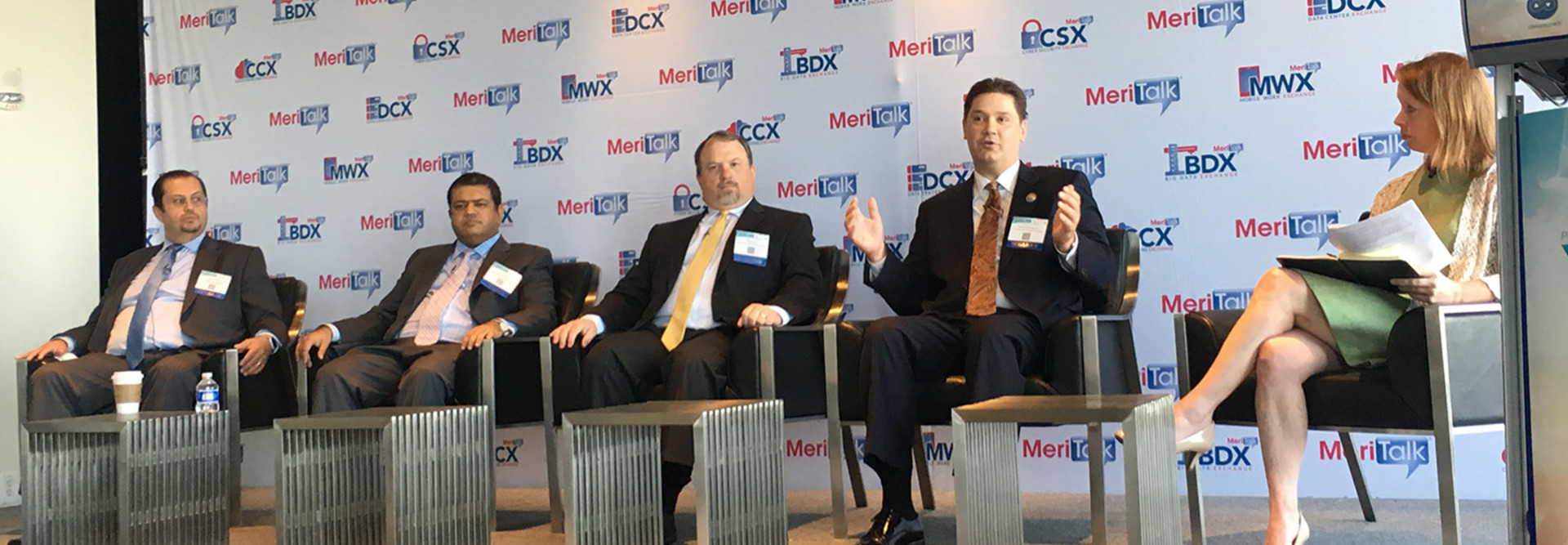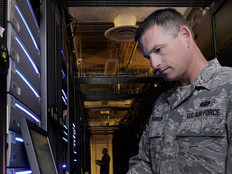DOD, State Department See Benefits from Shifting Global Operations to the Cloud
Federal agencies continue to face impediments in moving applications to the cloud, and the cloud cannot be used for everything, but cloud migrations can deliver significant benefits for agencies, especially those that have global footprints.
That was a key takeaway of a panel at a July 12 MeriTalk event in Washington, D.C., “Federal Focus: The Cloud Generation,” in which federal officials discussed how cloud convergence is impacting their agencies.
Cloud can provide greater agility, give employees around the world access to data in real time and help cut costs, the officials said.
SIGN UP: Get more news from the FedTech newsletter in your inbox every two weeks!
What Is Driving Federal Cloud Migration?
John Hale, chief of enterprise applications at the Defense Information Systems Agency, the Defense Department’s IT arm, said at the event that the Pentagon views cloud convergences “as the centerpiece toward data center consolidation.”
“It’s part of the overall federal data center consolidation efforts, which is really geared toward saving money in the long run, but more about freeing up space in the existing facilities so that we can focus more on mission data there,” he added.
DOD has a global mission, and it needs to deliver capabilities and data to millions of soldiers and civilian employees around the world every day in real time, Hale noted. At the same time, he said, DISA often deals with users who don’t trust the cloud.
“Cloud is not for everything,” Hale said, and all apps will not be moved to the cloud. Some DOD apps, which were designed in the 1980s, updated in the 1990s and are still being preserved today, will not be moved to the cloud.
The DOD is in favor of using an on-premises private cloud for mission-critical and sensitive data and putting non-sensitive data in public clouds, Hale said. “I always like to say, I don’t think Congress or the president or the American people would feel comfortable knowing that the nuclear command and control of our forces is being run on a public cloud,” he adds. “With that said, we have a need to keep certain things on-prem.”
At the same time, DOD is leveraging more public cloud, especially Software as a Service, he added, and less Infrastructure as a Service.
Meanwhile, Benjamin Bergersen, CIO of the U.S. Trade and Development Agency, said the agency sees cloud as a way to provide employees with flexibility.
USTDA supports American exports by establishing pilot programs for reverse trade missions that potentially turn millions of dollars of investments into billions of dollars in exports. USTDA’s staff operates around the world, and its Washington office is moving to a new location in the next few months, Bergersen said.
The agency still needs to deliver services and must decide what it will continue to move the cloud. Bergersen said the agency needs to assess the risks of that move, especially of services going down. USTDA is also thinking through new services it can provide “to be more mobile and more agile so it really doesn’t matter where our office is.” The relocation is a catalyst for moving more applications to the cloud, he added.
Millennial Workforce Embraces the Cloud
Alen Kirkorian, division chief of the Innovation, Strategy, and Security branch in the Office of the Chief Architect at the State Department, added that the agency operates in about 275 different locations around the world. The department needs to support employees, their families and officials from other agencies using those State Department facilities — as well as large offices in the United States.
State Department CIO Frontis Wiggins, appointed in November 2016 after three decades at the agency, has started to engineer a “fundamental shift” at the department’s Washington headquarters, Kirkorian said.
“He is really trying to drive us to this new model of really trying to push hybrid cloud solutions, with enclaves throughout the ecosystem,” Kirkorian said. “It’s actually very forward thinking, and it’s actually kind of scary to some of the folks at the State Department, because they’re used to doing things a certain way.”
The next generation of Foreign Service officers, Kirkorian said, are “the Facebook generation; they’re not the, ‘Oh let me sit behind this, excuse the reference, Wang computer. That’s the kind of closed-loop system [older employees are] used to, where everyone has to be in the office to do work. No.”
Millennial workers want to be able to do their work on the go or from anywhere, Kirkorian said, whether via a cloud-accessible electronic briefing book or using mobile tools to monitor an election or see how a development program at a school is progressing.
“Realistically, the cloud is now providing us the ability to do more of the outward-facing things,” Kirkorian added. “Obviously a lot of us all realize that we have a lot of data in our ecosystem, and that’s kind of what scares a lot of the security folks. The data, we don’t know what it is, and if it gets out, we’re not going to really know what the impact is going to be.”
Cloud, however, enables the State Department to deliver innovative services to its employees, he said. Innovation is “something that challenges us when it comes down to it,” Kirkorian said.
Yet simple innovations like an electronic briefing book can make life easier for officials, he said. “Innovation and transformation are really coupled together very tightly,” he said. “It’s really understanding the business process and helping to try and modernize it.”
The State Department has many legacy processes and a lot of data, Kirkorian said. Innovation requires looking at that in new ways. While it can be scary, he added, “I think it can really bring us, the new generation and the older generation, together to really move forward together to support the business.”









